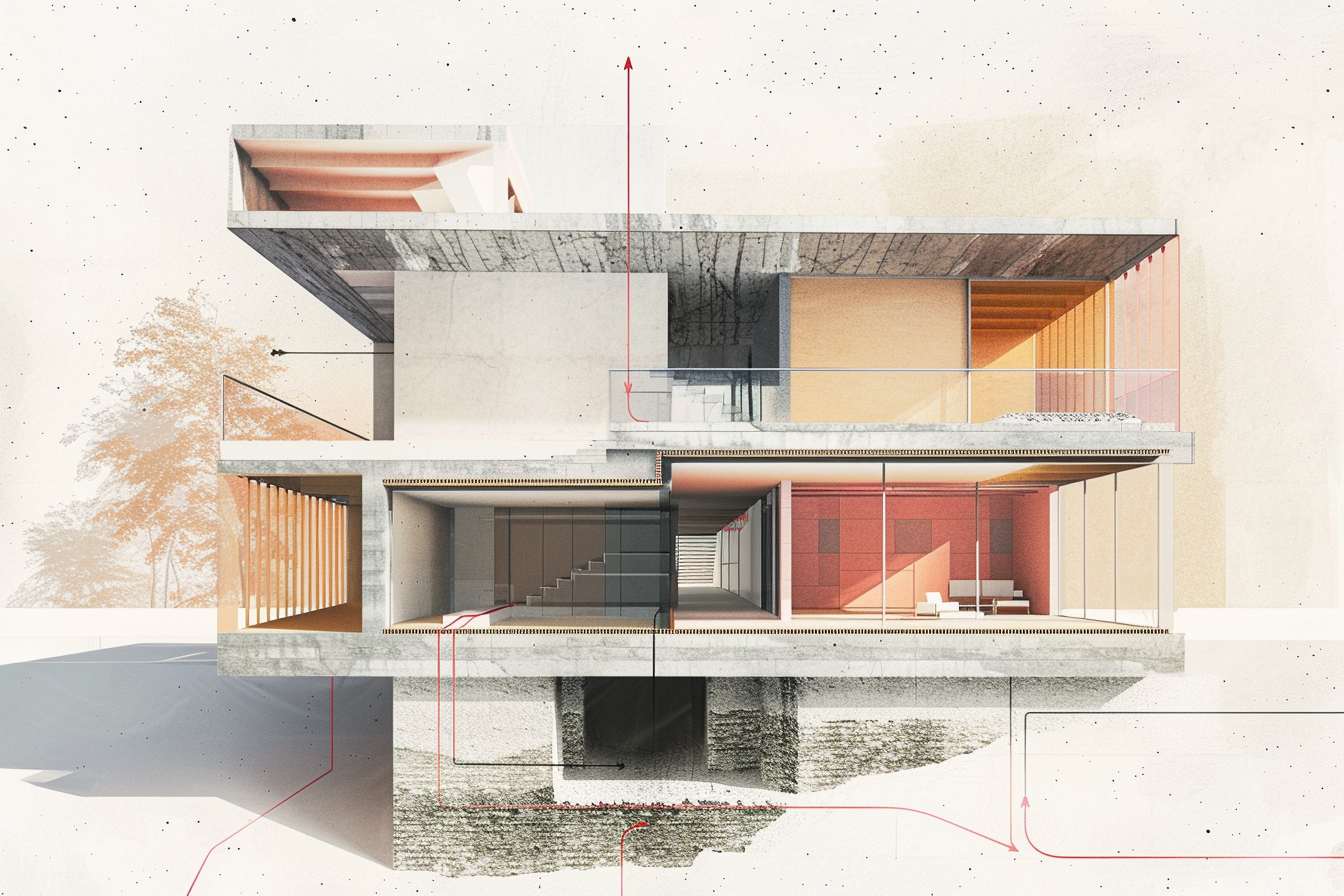Thermal Mass and Insulation

1. Introduction
In the pursuit of energy-efficient buildings, thermal mass and insulation are foundational components of passive design. While both contribute to thermal comfort and energy reduction, they operate through fundamentally different mechanisms. Thermal mass stores and releases heat over time, whereas insulation minimizes the flow of heat. When strategically combined, they enhance a building’s performance, particularly in climates with significant temperature fluctuations. Recent architecture graduates often understand these principles academically but may struggle with applying them effectively in real-world projects. This article bridges that gap, offering a deep dive into material strategies, performance metrics, and implementation across various climates and building scales.
Topics Covered:
- Definitions and principles of thermal mass and insulation
- Performance characteristics and material selection
- Climate-specific strategies
- Case studies and real-world applications
2. Understanding Thermal MassDefinition: Thermal mass refers to a material’s ability to absorb, store, and release heat. Common materials with high thermal mass include concrete, brick, stone, and adobe. How It Works Thermal mass moderates indoor temperature by absorbing heat during the day and releasing it at night, creating a time lag that can reduce reliance on mechanical heating and cooling.
Pro Tip:Thermal mass is most effective when exposed to internal spaces and paired with operable shading devices.
Ideal Applications
- Hot, arid climates with large diurnal swings
- Passive solar heating strategies
- Buildings with controlled solar exposure
3. Understanding InsulationDefinition: Insulation resists the flow of heat, measured by its R-value. The higher the R-value, the greater the resistance to heat transfer.
Types of Insulation
- Batt Insulation: Typically fiberglass or mineral wool, ideal for framed walls.
- Rigid Board: High-density panels used in roofs and foundations.
- Spray Foam: Provides both insulation and air sealing.
Pro Tip:Use continuous exterior insulation to reduce thermal bridging and improve envelope performance.
Ideal Applications
- All climates
- Retrofit and new construction
- Tight building envelopes with mechanical ventilation systems
4. Balancing Thermal Mass and Insulation The effectiveness of thermal mass depends heavily on the building's insulation strategy. Insulation without thermal mass may cause internal temperatures to spike or dip quickly. Conversely, thermal mass without insulation may lose heat too rapidly.
Integration Strategies
- Use high-mass interior walls in combination with well-insulated envelopes.
- In warm climates, pair mass with night ventilation to flush heat.
Pro Tip:Over-insulating can reduce the benefits of thermal mass. Analyze climate data to determine the optimal balance.
5. Climate-Specific Design StrategiesHot-Dry Climates (e.g., Phoenix, Arizona)
- High thermal mass to store daytime heat
- Night ventilation
- Minimal glazing on west-facing walls
Temperate Climates (e.g., Sydney, Australia)
- Balanced insulation and mass
- Seasonal solar control strategies
Cold Climates (e.g., Oslo, Norway)
- High insulation values
- Limit thermal mass to reduce heat loss
- Airtightness is critical
Hot-Humid Climates (e.g., Singapore)
- Emphasize insulation and shading
- Use lightweight construction
- Avoid high thermal mass unless actively ventilated
6. Case StudiesCase Study 1: Bosco Verticale, Milan, Italy
- Design Strategy: Uses insulation, shading from greenery, and concrete core thermal mass.
- Climate Consideration: Temperate climate; vegetation aids thermal performance.
- Result: Reduced cooling demand by up to 30%, improved indoor air quality.
Case Study 2: Desert Courtyard House, Scottsdale, Arizona
- Design Strategy: Heavy stone walls with high thermal mass, shaded courtyards.
- Climate Consideration: Hot-dry climate with significant day-night variation.
- Result: Stable internal temperatures and minimal HVAC usage.
Case Study 3: BedZED, London, UK
- Design Strategy: Super-insulated envelope, exposed internal concrete slabs.
- Climate Consideration: Cold climate requiring tight envelope.
- Result: 90% reduction in space heating demand compared to typical homes.
7. Material Selection and DetailingHigh Thermal Mass Materials
- Concrete, stone, rammed earth, adobe
Insulation Materials
- Natural: sheep wool, cellulose
- Synthetic: polyurethane, expanded polystyrene
Detailing Tips
- Eliminate thermal bridges at junctions
- Use thermal breaks in steel connections
- Combine air barriers with vapor control layers
Pro Tip:In hybrid systems, place thermal mass inside the insulation layer for best thermal lag performance.
8. Conclusion Understanding the interplay between thermal mass and insulation is critical for designing energy-efficient buildings tailored to specific climates. For recent graduates, mastering these concepts provides a practical foundation for passive design strategies. Whether working on urban high-rises or rural homes, the thoughtful selection and combination of materials will significantly impact thermal comfort, energy consumption, and occupant well-being. By referencing real-world applications, integrating material science, and applying climate data, new professionals can confidently design envelopes that perform both thermally and environmentally. These principles not only meet regulatory benchmarks but contribute to resilient and sustainable architecture.